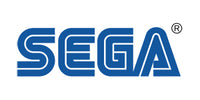Types of Disc Damage
Fix Scratched Discs: What Can and Can’t Be Repaired
Learn which types of disc damage can be restored with professional resurfacing—including video games, movies, Blu-rays, DVDs, and more.
Discs can suffer from a wide range of damage—some are easy to fix, while others, unfortunately, are permanent. On this page, we’ll walk you through the most common types of disc damage and explain what our professional resurfacing service can (and can’t) repair.
✅ Repairable or Likely Repairable
Surface Scratches
These are the most common and easiest to fix. Caused by general use, improper storage, or leaving discs loose, these scratches often cover the entire disc—but we can usually resurface scratched discs and restore them to like-new condition.
Circular Scratches / “Laser Burn”
Common on Xbox 360 and PS2 games, this ring-shaped scratch usually results from moving the system while the disc is spinning. Despite the nickname, it’s not caused by the laser. These discs are almost always repairable with professional equipment—we’ve successfully restored thousands of them.
Deep Scratches & Gouges
Discs with deeper scratches or gouges from heavy use or mishandling may still be salvageable. While very deep damage often can’t be completely removed, our professional disc repair service can often reduce it enough for the disc to become readable or playable again—especially if the data layer remains intact.
Discs using older CD-style formats—like audio CDs, TG-16 CD, Sega CD, Dreamcast, and Saturn games—are more vulnerable because their data layer sits closer to the read surface. Deep scratches or gouges on these formats are more likely to reach the data layer, which can render the disc unreadable, even after resurfacing. CD-based media is also made from a harder plastic compound than DVDs, making scratches more difficult to remove during resurfacing.
That said, it’s often worth attempting a repair—some discs may return to a playable state if the damage can be reduced just enough for a successful read.
🔵 Special Note About Blu-ray Discs
Blu-ray discs are the most difficult type of disc to repair. Unlike DVDs or CDs, Blu-ray discs have an extremely thin read-side protective layer and are coated with a durable “hard-coat” finish. While this coating makes them more resistant to everyday damage, it also limits how much can be fixed when they do get scratched.
- Light to medium scratches can often be reduced or removed with fair to excellent results, depending on severity.
- Deep scratches may be reduced, but not completely removed—though even partial improvement can sometimes restore playability.
- Very deep scratches cannot be removed and typically compromise the hard-coating, which may reach (and damage) the data layer.
No disc repair service—ours included—can fully remove deep scratches from Blu-ray discs. That said, resurfacing may still help in borderline cases or improve playability enough to make a difference.
👉 Also see our Scratch Removal Potential by Disc Type chart to see what's realistically repairable.
⚠️ Not Repairable or High Risk Damage
Label-Side Damage
Most people don’t realize the label side of a disc helps protect the data layer. If this top surface is scratched, punctured, or dented severely enough, it can damage the reflective layer underneath, making the disc unreadable. Unfortunately, label-side damage cannot be repaired by any disc resurfacing service.
How to check: Hold the disc with the label side facing a bright light (like a flashlight). If you see pinholes or light shining through scratches in the label, the data layer may have been compromised and the disc may be unreadable.
Remember: resurfacing only repairs the shiny, read-side of the disc—not the label side.
Heat Damage / Warping
Discs exposed to direct heat—such as being left on a dashboard or near a heater—may become warped or melted. Warped discs can’t spin evenly and are not repairable.
Cracked Discs
Cracks can be anywhere on the disc, but usually start near the spindle hole or the outer edge. If cracks extend into the data area of a disc, it cannot be repaired by any method.
Disc/Data Rot
If the protective layers of a disc fail, oxygen can enter and corrode the reflective layer. This results in brownish discoloration (similar to a coffee stain) and eventual data loss. Unfortunately, disc rot cannot be repaired, and once the data is lost, the disc is no longer readable.
Layer Separation (Delamination)
Rare, but possible—some discs may begin to separate at the layer level due to age, improper storage, or manufacturing flaws. Once separation occurs, moisture and air can enter the disc, making the data unreadable over time.
Not Sure If Your Scratched Discs Can Be Fixed?
If you're unsure whether your scratched discs are repairable, contact us. We’re happy to offer honest guidance, answer any questions, and let you know if our professional disc resurfacing service is the right fit for your discs.
📄 Learn More:
All names, logos, and images are trademarks of their respective owners.
Content may not be reproduced or distributed without written permission.
Copyright © Retro Game Fan. All rights reserved.
















